
Winner, Under-18: “Small critters moving on a fire urchin – Coleman on Fire” by Dheeraj Nanda (Ambon, Maluku, Indonesia). “The coleman shrimp and fire urchin here share a symbiotic relationship where the shrimp seeks refuge among the spines of the urchin – the female is larger than the male.”. (Photo by Dheeraj Nanda/2017 Royal Society of Biology Photographer of the Year)
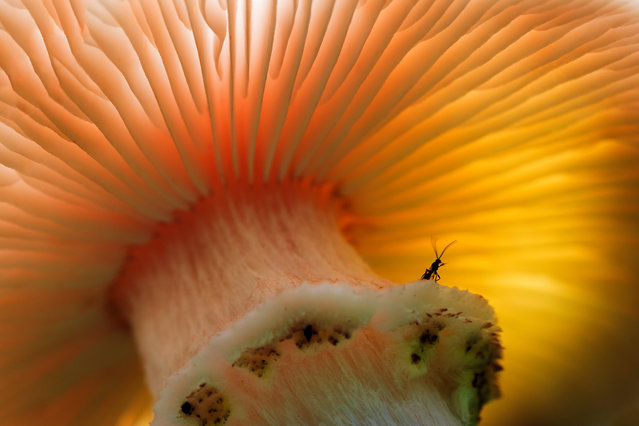
Winner: “Fungi and insect – welcome to my humble abode” by Duncan McNaught (Galloway, South Scotland). “Some of the forests in my area are pretty inaccessible due to their wet boggy nature, however its these hidden, sometimes, magical places I find myself more often than not lying flat on the ground photographing mosses, fungi and insects, all waiting to be discovered and mostly unseen by today’s hectic society”. (Photo by Duncan McNaught/2017 Royal Society of Biology Photographer of the Year)
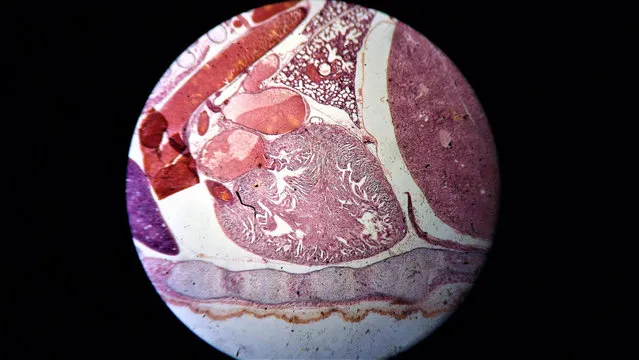
Runner-up, Under-18: “Compact Complexity” by Alannah Harding (Queen Alexandra Sixth Form College, North Shields, UK). Pictured is the heart of a mouse embryo, perfectly formed and surrounded by other organs. “A perfectly formed, miniature powerhouse maintaining balance before life has begun, sustaining a fascinating ecosystem – its own little world – on the scale that only a microscope can see”. (Photo by Alannah Harding/2017 Royal Society of Biology Photographer of the Year)
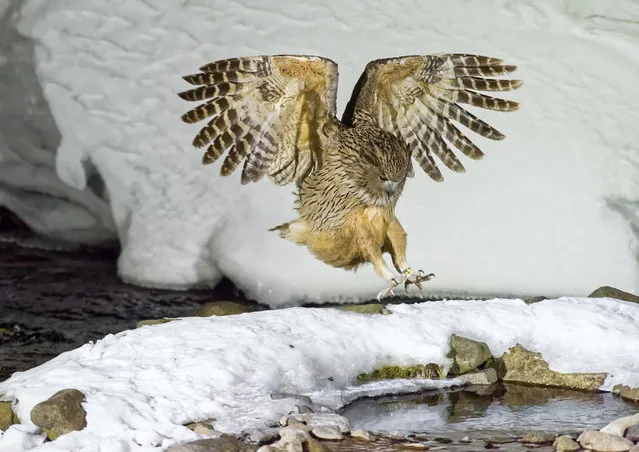
Shortlisted: “Out of the darkness” by Peter Burkill (Shiretoko Peninsular, Hokkaido, Japan). The first in a sequence of wild Blakiston’s fish owl (Bubo blakistoni) – the largest, and one of the rarest, most endangered, living species of owl. In Hokkaido Japan, there are 20 breeding pairs. “I photographed at night in mid-winter. This photo shows the owl plunging into an icy stream, searching for food: small fish corralled in a small pool within the stream”. (Photo by Peter Burkill/2017 Royal Society of Biology Photographer of the Year)
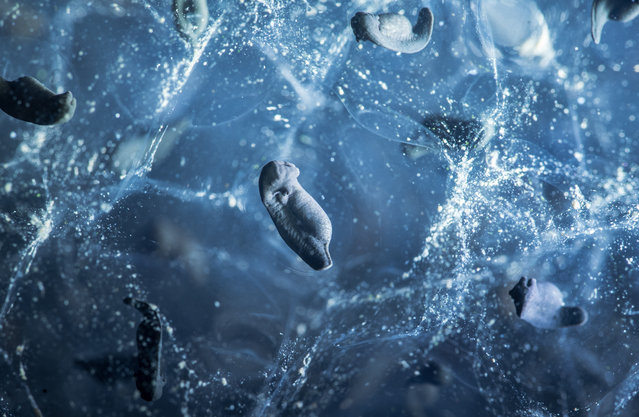
Shortlisted: “Spawn development” by Amy Bateman (Croft Foot farm, Kendal, Cumbria). Pictured is the development of the neural system in common frogspawn. “Macro photography and the lighting style I have created allows imagery of details not normally evident with the human eye”. (Photo by Amy Bateman/2017 Royal Society of Biology Photographer of the Year)
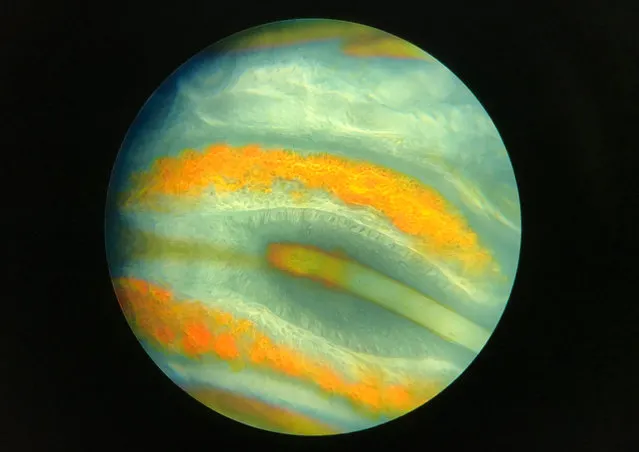
Shortlisted: “A world just under the skin” by James Patterson (Biology teaching lab, London). A light micrograph of a section through cat skin showing a developing hair follicle. “The specimen dates from the 1950s, yet the vibrancy of the stain used is still breathtaking. The antique microscope slide from which the image was captured is rarely examined – truly a hidden gem!”. (Photo by James Patterson/2017 Royal Society of Biology Photographer of the Year)
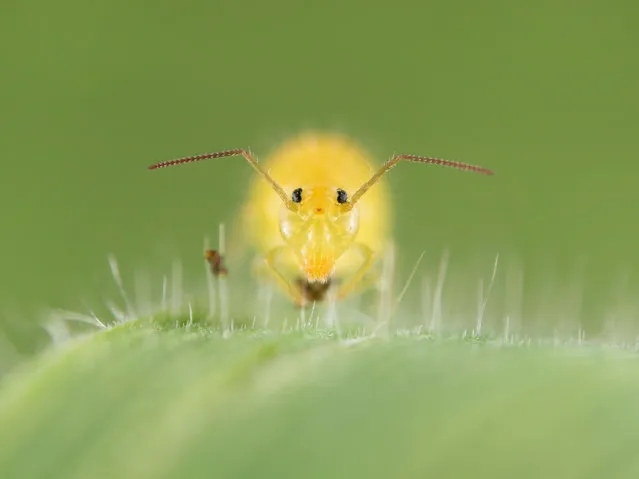
Shortlisted: “Springtail” by Marc Brouwer (Genemuiden, the Netherlands). “Only one to two millimetres in size, this springtail was found in a field sitting on grass. Looking for a springtail is like looking for a needle in a haystack. Many people will have never seen a springtail before or even know that they exist”. (Photo by Marc Brouwer/2017 Royal Society of Biology Photographer of the Year)
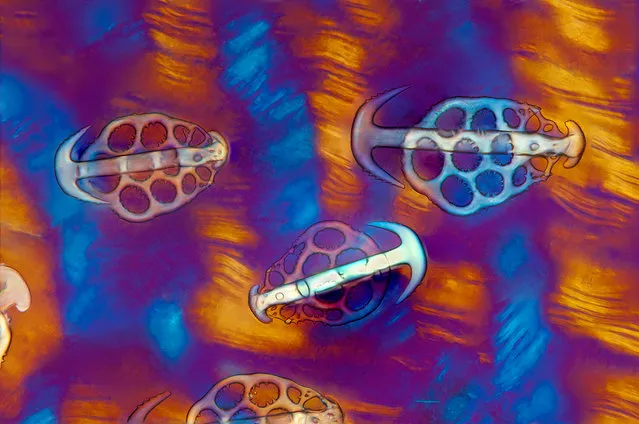
Shortlisted: “Hooks and Anchors” by Steve Lowry (Portstewart, Co. Londonderry). Polarised light micrograph of the skin of the sea cucumber, Synapta, showing paired spicules referred to as “plates and anchors”. “The sharp spikes of the anchors may act as a deterrent to potential predators, and are transparent, only becoming visible when viewed using polarised light”. (Photo by Steve Lowry/2017 Royal Society of Biology Photographer of the Year)
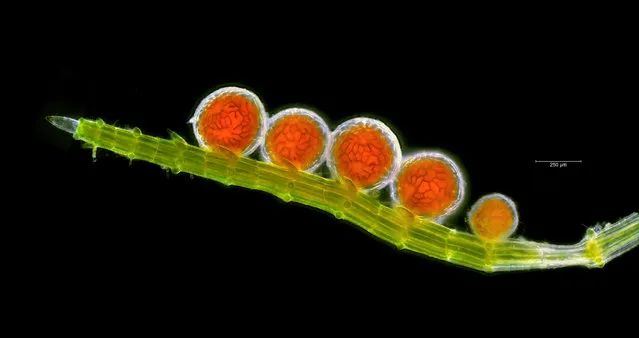
Shortlisted: “Chara antheridia” by Chris Carter (The Lizard, Cornwall UK. Collected by a colleague, Paul Gainey). “This is a line of antheridia on a male branch of the stonewort Chara fragifera, one of the algae. Each sphere has a closely-knit set of ‘shield cells’ with a black outline that give a dramatic setting to the red colouration”. (Photo by Chris Carter/2017 Royal Society of Biology Photographer of the Year)
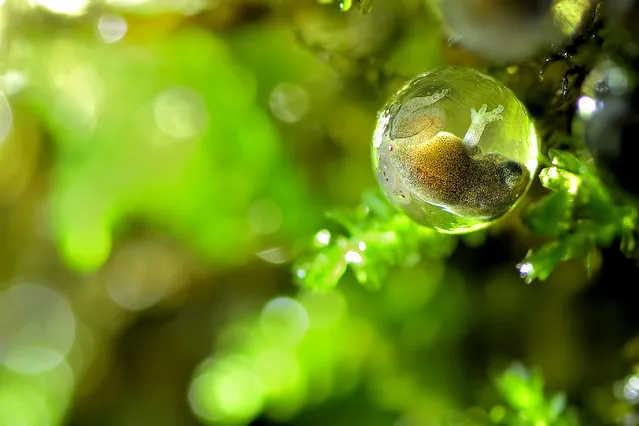
Shortlisted: “Life in a drop” by Anup Deodhar (Western Ghats, Amboli, Maharashtra, India). “This is an egg of a Bombay bush frog sized four to five millimetres. In this image a fully developed froglet can be seen in the transparent egg shell”. (Photo by Anup Deodhar/2017 Royal Society of Biology Photographer of the Year)
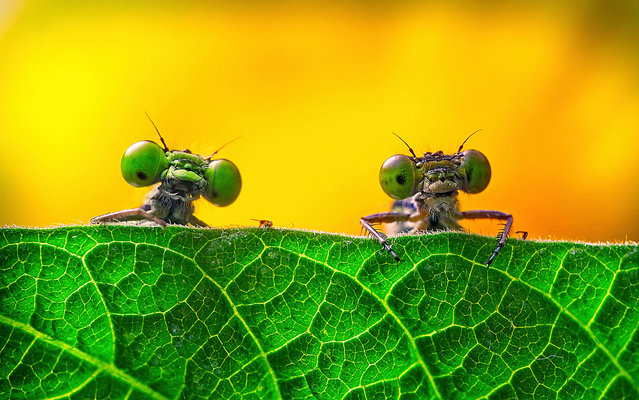
Shortlisted: “Two big eyes” by Miao Yong (Zejiang province, China). Damselflies look over the leaves. “I was photographing insects in a park near my home when suddenly I found two damselflies in the grass. They kept flying and it was very difficult to focus until suddenly they parked behind a leaf”. (Photo by Miao Yong/2017 Royal Society of Biology Photographer of the Year)
16 Oct 2017 09:04:00,
post received
0 comments
